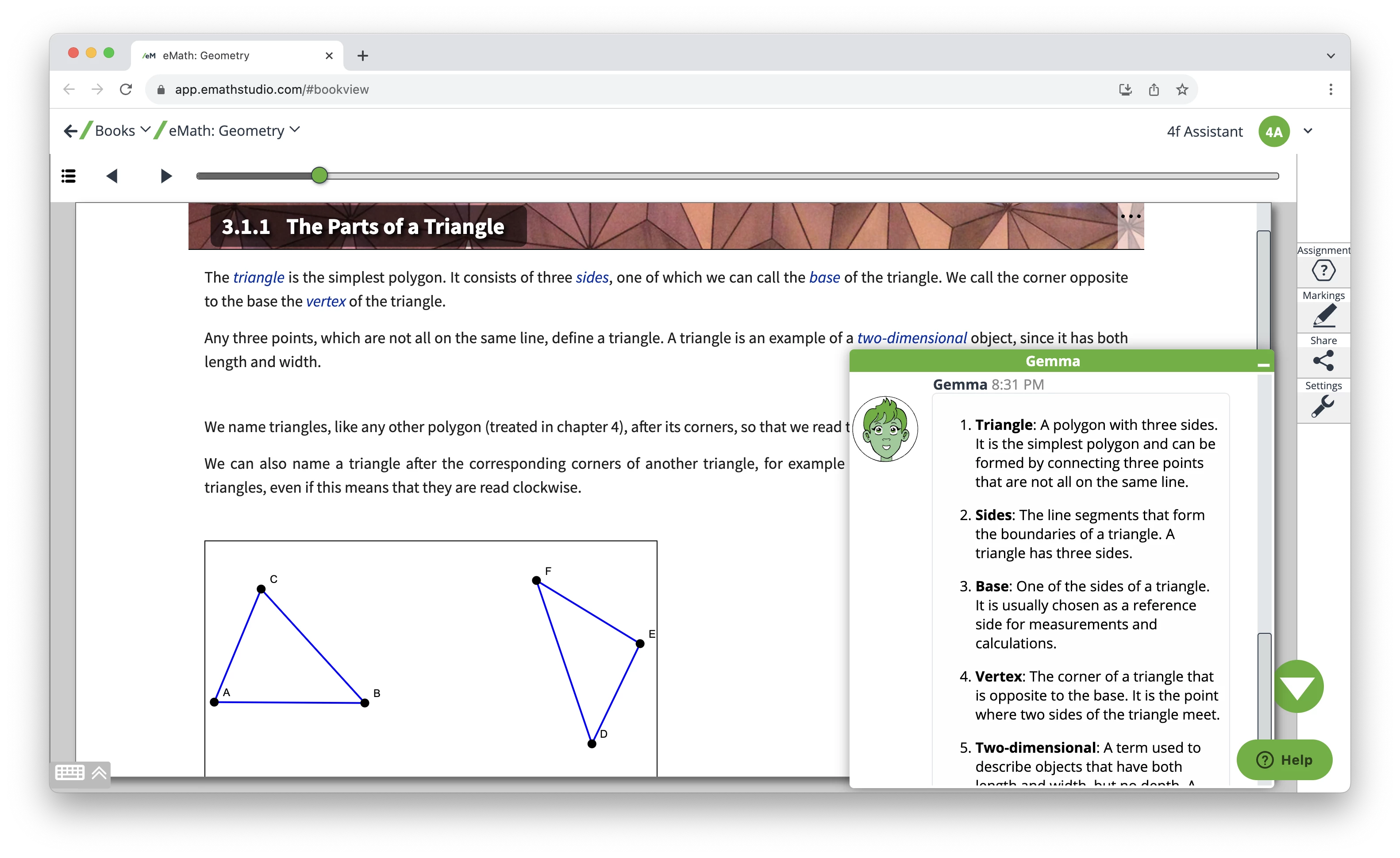AI in education has the possibility to at best enhance learning and make it possible for everyone to learn much more effectively. AI can let you deepen your understanding so that the learnings will stay for the rest of your life. The reason is that when AI is applied, it can give the learner all the knowledge in the world, and the knowledge can be tailored to the needs of the individual learner. Much like all the best teachers and tutors in the world, focusing on teaching only one person.
At worst, AI in education can be used to, on one hand, enhance certain believes and distort the world view, or on the other hand dumben the generation by making skills such as critical thinking, structuring, categorising, analysing, drawing conclusions, creativity, memorisation, patience and knowledge, obsolete. With the lazy nature that most of us have, it is important to keep the motivation for learning up, in order to drive development in the less detrimental direction.
How does eMathStudio use AI?
The key to keeping up the motivation for learning is to provide a learner with the right level of challenge, it can not be too easy and not too hard to solve the problem. Too easy will make it boring, and too hard will make the student give up. A small challenge will give the student the satisfaction of achieving something.
Other key elements are praise, competition and seeing the purpose and the end, all with varying importance for each individual.
In mathematics, something becomes too hard when the fundamentals have not been understood. In other words, some pieces of the puzzle are missing. It is also important to understand that there are many possible paths to solve problems. On that path, a correct and absolute verification of what is true and what is not is needed so that the learner can make the logical connections required for a deep understanding. A teacher or an application that only allows for one path, will strangle the creativity of the learner and induce a mistrust in how the learner sees their own capabilities. On the other hand, only allowing for one way of solving a problem, will strangle motivation.
The math checker we have built works within the AI field of automated reasoning, utilising both automated theorem proving and automated proof checking. It is the only one of its kind in the world, based on tens of years of academic research in Cambridge, Stanford, Åbo Akademi, Edinburgh and more. It can verify the correctness of any and every step in a student’s solution and find the mistakes that the student has made on the way, allowing for multiple paths to solution. If the students can not correct the mistakes by themselves, the mistakes are direct pointers to where the student lacks understanding. Combined with the built in LLM (like ChatGPT) it can then teach the student basic concepts and direct for further learning.
The skill gap maps and adaptive learning paths suggested by the virtual math tutor Gemma, are based on the ontology we have defined for the fundamentals of mathematics up to advanced high school mathematics. The question at every point is: “With the current skills the learner has, what can they be expected to learn next? Or the other way around, “since the learner was not able so solve this problem or made this mistake, the following skills might be missing”.
Another reason for not being able to solve problems in mathematics, is the language barrier. The learner has to understand the question, and often the exact definition of the word to be able to solve the problem.
Once a mistake has been found by the math checker or the learner asks for help, Gemma, the virtual tutor will explain the issue to the student with the help of GPT-4 for delivering the explanation, and background information on what the student can be expected to understand based on their skills profile and the categorization of the mistake that was made or the skills required to solve the assignment.
Learning starts from when we are born and start connecting the paths in our nervous system that will raise the right arm and spread the toes on the left foot, to when we we sit in school and are graded on our exams. In a classroom, the teacher will naturally give feedback (reinforcement learning), or a student can correct their assignments themselves by seeing the correct answers, or a software can deliver automated assessment. The output is very simple: the student has learned the skill/the student has not learned the skill.
This is true in all learning, but STEM and mathematics is different – it is not based on heuristics but deterministic mathematical models. Thus ChatGPT or any LLM alone isn’t enough. You need a solution that doesn’t make mistakes and pedagogically guides your students forward. As a teacher this lets you see where every student is at any time. As a tutor you can give individual guidance, help the student and verify in real time that they have understood. As a student you gain confidence and learn in real time.
-- Ida Rönnlund, CEO, eMathStudio, ida@emathstudio.com
Ready to take the plunge? Create a free account on https://emathstudio.com/demo or sign up for a demo via the bot below. 👇

